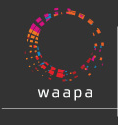Home > DNM > Iss. 1 (2017)
Abstract
This paper examines the process of preparing Barrett’s codex V (2007) and codex XV (2015) and their performance on Saturday 18 June, 2016, as part of the Ghent Advanced Master in Contemporary Performance Practice (ManaMa) academy examinations in Brussels, Belgium. This project involved the development of deep collaborative relationships with a number of other performers, the study and interpretation of alternative notational practices, and the invention of a variety of ad hoc solutions to issues of coordination and ensemble unity, with a particular focus on clear physical communication. Reflections on my own process of preparation and rehearsal are supplemented by content from a series of interviews with leading performerimprovisers, many of whom are longterm collaborators with Barrett. These are: Richard Barrett himself, Milana Zarić, Arne Deforce, Sylvia Hinz, and Daryl Buckley. This investigation highlights the variety of strategies employed by improvisers while working within these composed structures. It also asks several questions about the performer’s body in the space of a structured improvisation, including: What is different about the bodily experience of improvisation as compared to ensemble performance of fully notated scores? How is the body a key tool for musical communication when decisions are being made moment-to-moment? And finally, in what ways do the musicians’ physical communications develop as they progress through the stages of learning a codex score?
DOI
10.14221/dnm.i1/1
Recommended Citation
Reardon-Smith, H.
(2017).
Codex: Embodied communication in Richard Barrett’s scores for improvisation.
Directions of New Music (1).
http://dx.doi.org/10.14221/dnm.i1/1


